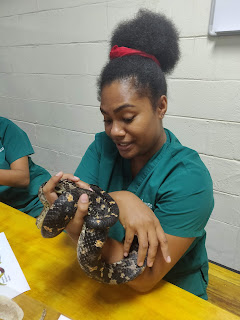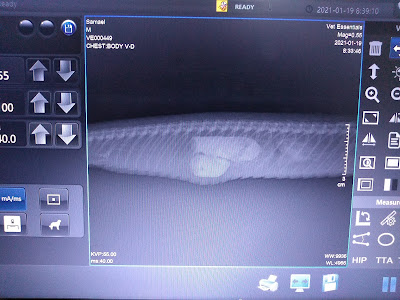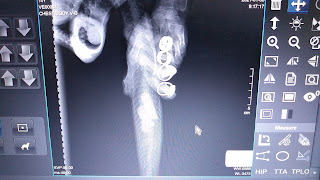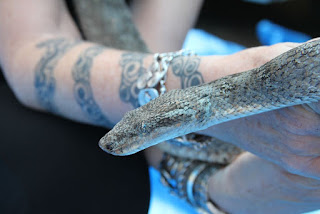The Pacific Boas: Natural History and Husbandry of Candoia - REPTILES & AMPHIBIANS • VOL15, NO 4 • June 2012 No
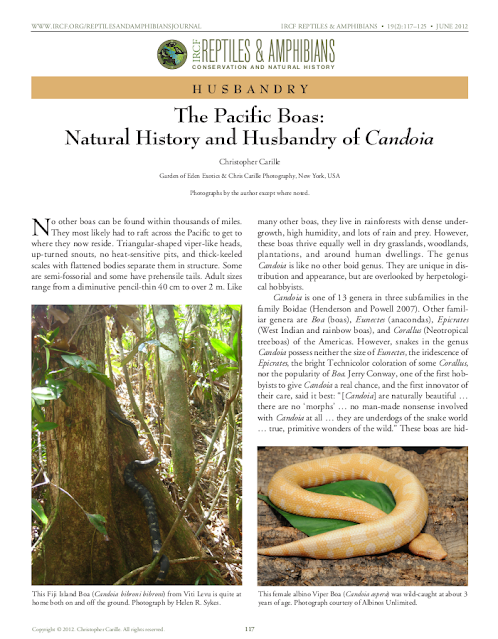
I contributed a pile of photos to this paper, for the Fiji boas. 😀 Download pdf here... by Christopher Carille Garden of Eden Exotics & Chris Carille Photography, New York, USA REPTILES & AMPHIBIANS • VOL15, NO 4 • June 2012 No other boas can be found within thousands of miles. They most likely had to raft across the Pacific to get to where they now reside. Triangular-shaped viper-like heads, up-turned snouts, no heat-sensitive pits, and thick-keeled scales with flattened bodies separate them in structure. Some are semi-fossorial and some have prehensile tails. Adult sizes range from a diminutive pencil-thin 40 cm to over 2 m. Like many other boas, they live in rainforests with dense under- growth, high humidity, and lots of rain and prey. However, these boas thrive equally well in dry grasslands, woodlands, plantations, and around human dwellings. The genus Candoia is like no other boid genus. They are unique in dis- tribution and appearance, but are overlooked by herpet
